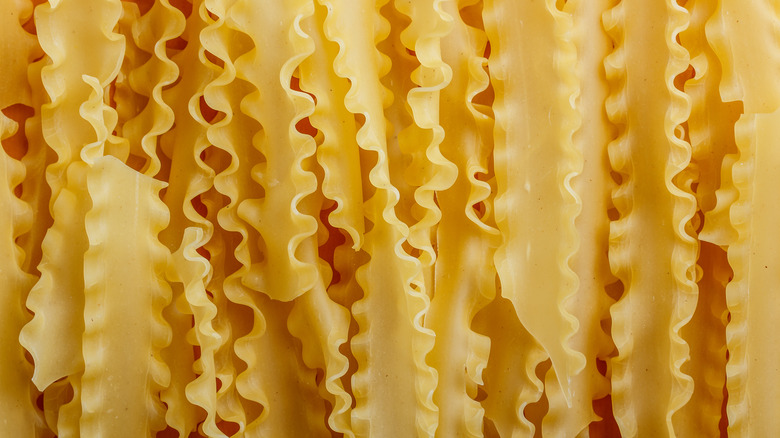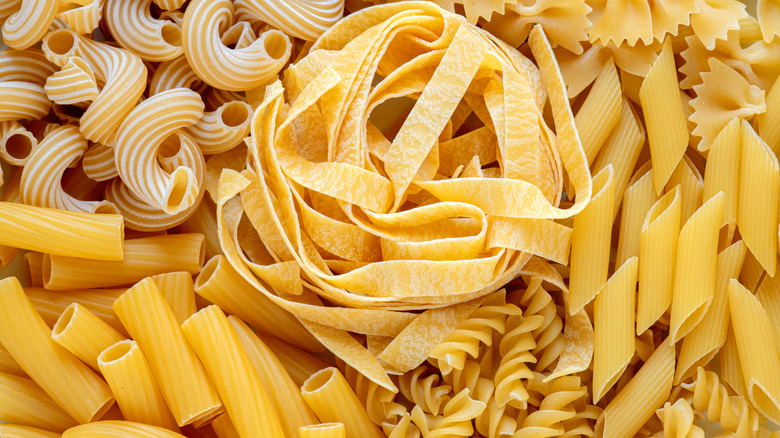Here's Why You Should Be Cooking With Mafaldine Pasta
Take a trip down the pasta aisle in your local store and you are bound to be accosted by a cornucopia of shapes, sizes, and names. According to Italian Food Experts, the five most popular pasta shapes in Italy are penne, spaghetti, fusilli, rigatoni, and tagliatelle. And although it's true that most pasta has the same ingredients — durum wheat flour mixed with water or eggs — according to the Italian Made, the various shapes of pasta are designed to be used in different dishes.
Bon Appetit, for instance, suggests using rod pastas, such as linguini and spaghetti, with simple tomato-based sauces and olive oil. These sauces coat the strands evenly and are perfect for delicate sauces. Ribbon pastas, like pappardelle, are great for creamy sauces, while tube-shaped pastas, like penne and rigatoni, are best for meaty and heavier sauces. Shaped pastas, like shells and rotinis, work well with chunky sauces.
Mafaldine pastas often fall into a hybrid category hen ranked with the best of the best, making them a great pasta to cook with — here's why.
Say hello to your new favorite pasta shape
Pasta maker DeCecco describes mafaldine as having a ribbon shape with curled edges on both sides. The curled sides retain more sauce than the smooth part. The curled ends also make for a beautiful plate.
The pasta, which comes from the Naples area of the Campania region of Italy, is also known as "reginette" or "reginelle" pasta. The pasta shape was dedicated by the people of Naples to Princess Mafalda of Savoy, and renamed mafaldine — or reginette (the Italian word for queen is regina) — in her honor. This regal pasta also tends to keep its texture, according to Purevege.com. Mafaldine's uses are endless, but DeCecco suggests trying the pasta with game sauces, seafood sauces, and white cheese-based sauces.
Culinary guru Martha Stewart suggests a simple dish of mafaldine with shrimp and lemon. The simple, yet elegant, dish uses one pound of large, cleaned and deveined shrimp, unsalted butter, dry white wine, one lemon, one shallot, red pepper flakes, tomato paste, and red pepper flakes. The trick to a successful dish, according to Stewart, is to keep the mafaldine al dente by cooking it two minutes less than the directions on the package.

